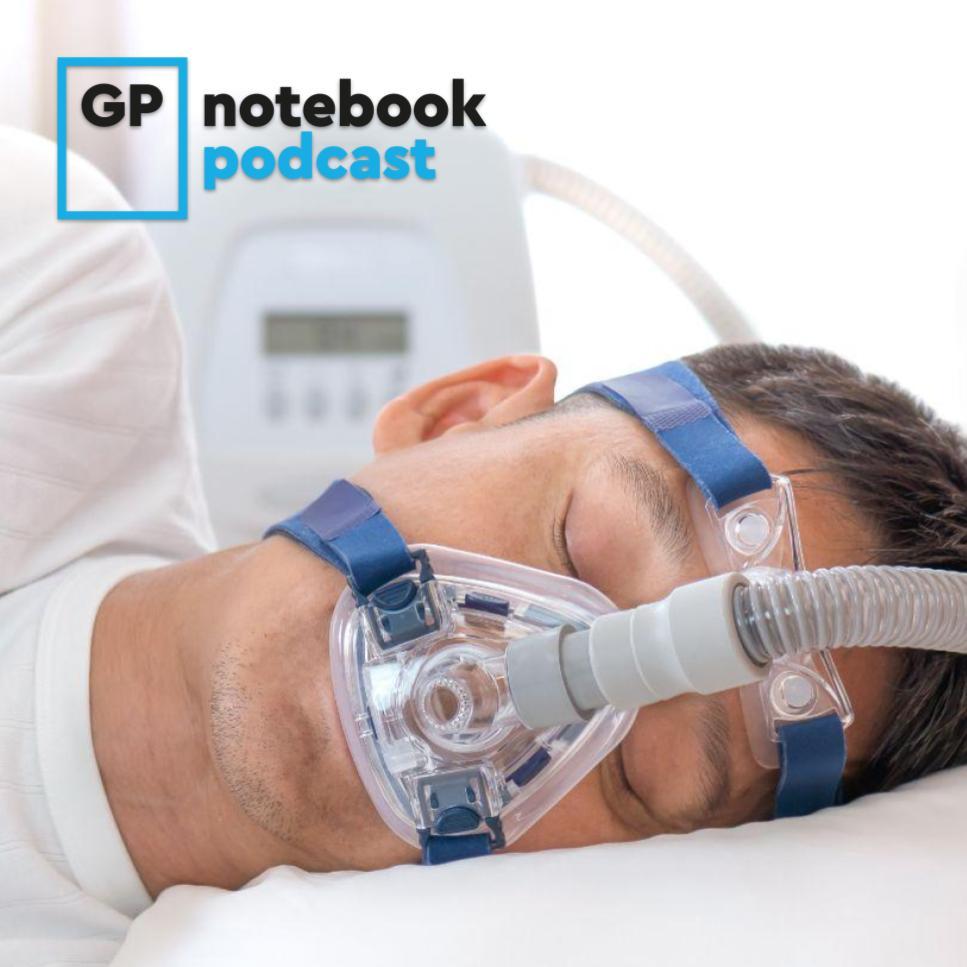Obstructive sleep apnoea (OSA) is a very common problem affecting around one and a half million adults in the UK, most of whom are undiagnosed and untreated. OSA has significant health consequences, including heart disease and an increased risk of fatal car crashes. In this episode, Dr Roger Henderson looks at who is most at risk of OSA, how it should be diagnosed, how to refer to secondary care and what treatment options are currently available to help people with the condition.
Key references
- NICE. Obstructive sleep apnoea/hypopnoea syndrome and obesity hypoventilation syndrome in over 16s (NG202). 20 August 2021.
- NICE, Clinical Knowledge Summaries. When should I suspect a diagnosis of obstructive sleep apnoea syndrome? November 2021.
- NICE, Clinical Knowledge Summaries. Scenario: Management of sleep apnoea. November 2021.
- Asthma + Lung UK. Obstructive sleep apnoea (OSA). Accessed 26 January 2023.
- Sleep Apnoea Trust. Accessed 26 January 2023.
Key take-home points
- With OSA there is intermittent and repeated upper airway collapse during sleep, causing irregular breathing at night and excessive sleepiness during the day. The incidence of OSA is increasing as the incidence of obesity is increasing.
- Complete apnoea is defined as a 10-second pause in breathing activity.
- Partial apnoea, also known as hypopnoea, is characterised by a 10-second period in which ventilation is reduced by at least 50%.
- OSA is defined by five or more respiratory events (such as apnoeas) per hour, in association with symptoms of sleep-disordered breathing.
- Obesity is the strongest risk factor for OSA. Other risk factors include being male, middle age, smoking, sedative drugs, excess alcohol consumption and a family history of OSA.
- NICE suggests a patient should be assessed for OSA if they report two or more of the following: snoring, apnoeic episodes (witnessed), poor quality and unrefreshing sleep with unexplained excessive tiredness, choking during sleep, memory impairment, nocturia and headaches on waking.
- There are multiple possible alternative diagnoses that can cause similar symptoms to OSA.
- The Epworth Sleepiness Scale is a quick and easy questionnaire that can be used during a consultation to help assess daytime sleepiness.
- Use the STOP-BANG screening questionnaire along with the Epworth Scale to help confirm the likely diagnosis.
- Polysomnography remains the traditional, gold-standard investigation.
- OSA management needs to be based on a multidisciplinary and holistic approach, which includes lifestyle modifications such as weight loss, stopping smoking and alcohol avoidance.
- The usual treatment for confirmed OSA remains CPAP (continuous positive airway pressure), and this needs to be worn for a minimum of 4 hours each night.
- Regarding driving, all patients with OSA causing excessive daytime or awake time sleepiness need to cease driving until satisfactory control of symptoms has been attained.
- For patients who respond to CPAP, the short-term prognosis is excellent.
- Oral appliances can be an alternative to CPAP for the treatment of patients with mild-to-moderate OSA, or for people with severe OSA who cannot tolerate CPAP.
- Surgery is sometimes considered for severe OSA but evidence for its effectiveness is limited.
- Novel treatment options for OSA are currently being assessed within the NHS. These include electrical stimulation of the hypoglossal nerve in moderate-to-severe OSA, and intraoral neuromuscular electrical stimulation devices such as eXciteOSA that are app-based, and when placed in the mouth for 20 minutes per day, aim to strengthen tongue muscles to reduce mild OSA.
Create an account to add page annotations
Add information to this page that would be handy to have on hand during a consultation, such as a web address or phone number. This information will always be displayed when you visit this page
